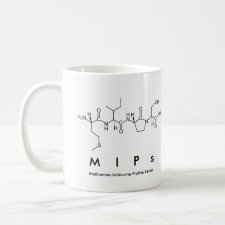
Authors: Van Grinsven B, Betlem K, Cleij TJ, Banks CE, Peeters M
Article Title: Evaluating the potential of thermal read-out techniques combined with molecularly imprinted polymers for the sensing of low-weight organic molecules.
Publication date: 2017
Journal: Journal of Molecular Recognition
Volume: 30
Issue: (1)
Page numbers: ArticleNoe2563.
DOI: 10.1002/jmr.2563
Abstract: In recent years, there has been a tremendous increase in the papers published on synthetic recognition elements. Molecularly imprinted polymers (MIPs), also referred to as "man-made mimics" of antibodies, are able to rebind their template molecules with high affinity. Advantages compared with those of natural receptors include their excellent thermal and chemical stability, low cost, and ease of the production process. However, their use in commercial biosensors is limited owing to the difficulty to incorporate MIPs into suitable sensing platforms and traditional detection techniques, such as chromatography, that require bulky and sophisticated equipment. In this review, we evaluate the potential to use MIPs combined with thermal read-out for the detection of low-weight organic molecules. We discuss thermal methods to study MIP-template complexation and to determine neurotransmitters concentrations. In particular, we highlight the heat-transfer method, a recent technique that is straightforward and low cost and requires minimal instrumentation. Until now, sample preparation involves a 2-step process, making it time-consuming, and measuring biological samples is difficult owing to the noise in the signal. Different sample preparation methods are discussed, and it will be demonstrated how this affects the thermal response. An outlook is given in novel methods that can simplify and speed up sample preparation. Finally, we show a novel thermal technique, which is based on the analysis of transport of thermal waves rather than evaluating the fixed heat-transfer resistance. Through applying the concept of thermal waves, signal-noise ratio is significantly increased, which results in lower detection limits and has potential for the study of biological samples
Author keywords: biomimetic sensors, heat transfer, molecularly imprinted polymers (MIPs), Neurotransmitters, thermal detection



Join the Society for Molecular Imprinting

New items RSS feed
Sign-up for e-mail updates:
Choose between receiving an occasional newsletter or more frequent e-mail alerts.
Click here to go to the sign-up page.
Is your name elemental or peptidic? Enter your name and find out by clicking either of the buttons below!
Other products you may like:
 MIPdatabase
MIPdatabase









